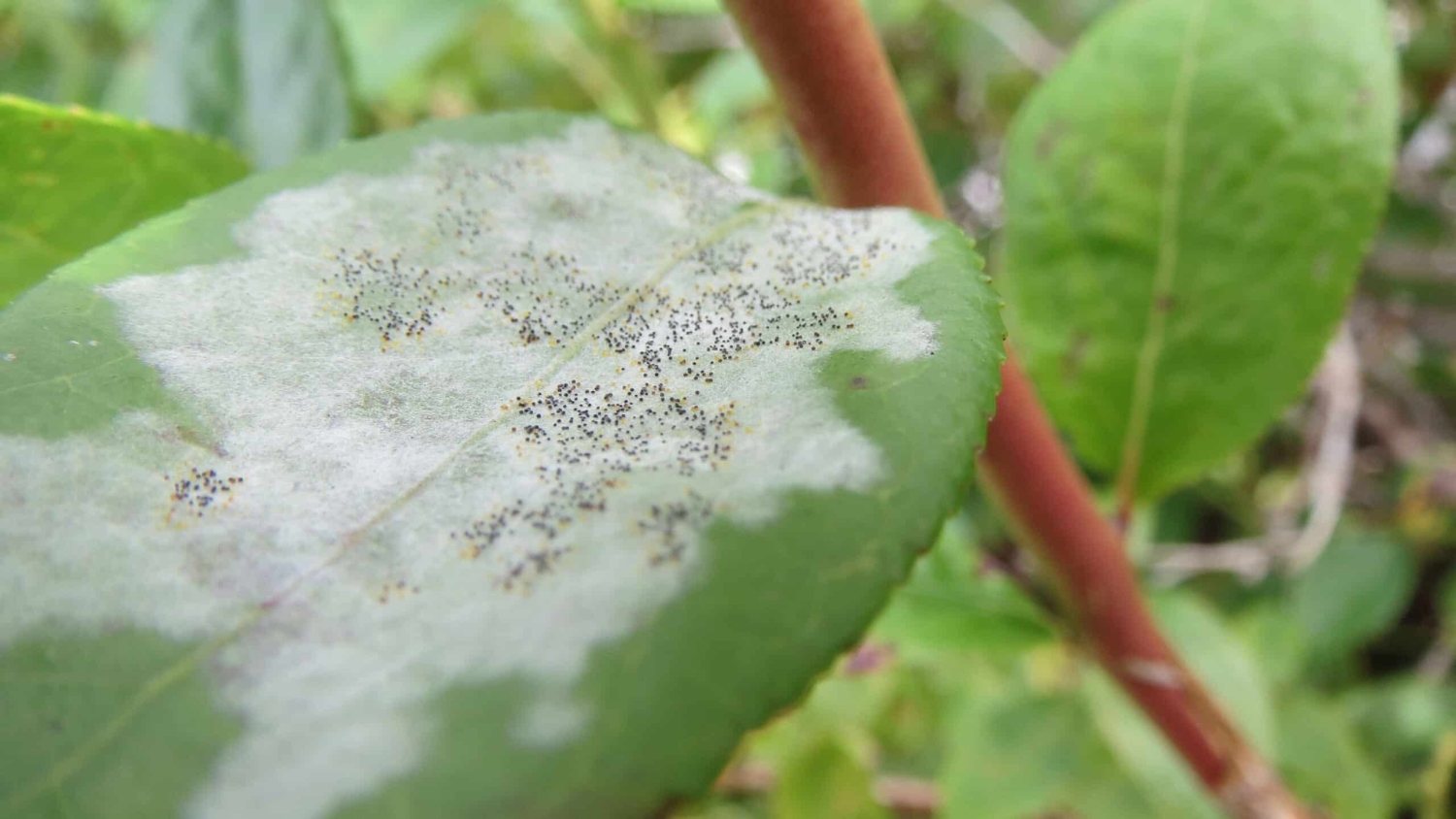Blueberries Beware: Powdery Mildew Spreading Across the Globe

A new North Carolina State University study pinpoints the worldwide spread of a fungus that taints blueberry plants with powdery mildew, a disease that reduces blueberry yield and encourages the use of fungicides to combat disease spread. The findings could help blueberry growers predict, monitor and control the spread of powdery mildew.
The study shows that the fungus, Erysiphe vaccinii, has in the last 12 years or so spread from its point of origin in the eastern United States to multiple continents.
“We’re watching this global spread happen right now, in real time,” said Michael Bradshaw, assistant professor of plant pathology at NC State and the corresponding author of a paper describing the research.
As its name suggests, powdery mildew disease causes a white, powdery substance to cover host plants, stealing nutrients and retarding photosynthesis while keeping the host alive. Different species of this fungus affect different plants; wheat, hops, grapes and strawberries, among other plants, have been detrimentally affected by powdery mildew.
“There are other closely related powdery mildews that affect plants like wild berries or eucalyptus, but these are genetically different from the ones spreading across the world on blueberries,” Bradshaw said.
In the study, Bradshaw and his colleagues examined historic and modern plant leaves plagued by powdery mildew. The collection includes 173 samples from North America, Europe, Africa and Asia; one sample analyzed from a North American herbarium was collected over 150 years ago, while the foreign samples were all collected within the past five years. In this study, powdery mildew was first spotted outside North America on a farm in Portugal in 2012, as noted by a co-author of Bradshaw’s who was employed by a major berry company.
The researchers performed genetic testing on the fungal samples to trace the history and spread of powdery mildew disease. Interestingly, none of the old specimens have the same genetic makeup, or genotype, as the specimens currently spreading throughout the world.
The study showed that the disease originated in the eastern United States and was set loose globally in two different introductions. One strain of E. vaccinii found its way to China, Mexico and California, while a different strain wound up in Morocco, Peru and Portugal. Bradshaw thinks humans are responsible for the spread as nursery plants traveled to foreign shores.
“This is a hard organism to control,” Bradshaw said. “If you’re sending plant material across the world, you’re likely spreading this fungus with it.”
Interestingly, the study also showed that the E. vaccinii fungus found in blueberries in other countries appears to solely reproduce asexually; both sexual versions of the fungus are not required in reproduction, whereas the fungus reproduces sexually and asexually in the United States.
The study also worked with a large company and farmers to provide an estimate of the global cost of powdery mildew to blueberries, reflecting the cost of spraying fungicide to prevent or reduce powdery mildew. The study estimates a cost range of between $47 million and $530 million annually to the global blueberry industry.
Finally, the study provides some early warning signals to important blueberry producing areas, like the U.S. Pacific Northwest. Conditions there are ripe for powdery mildew to take hold and spread, but the disease has not found its way there yet.
“Disease spread could also be impacted by agricultural conditions,” Bradshaw said. “Some areas that grow blueberries in tunnels, or enclosed areas, seem to have worse disease outcomes than areas that grow blueberries outdoors without any covering, like in North Carolina.”
Bradshaw added that the researchers utilized a useful tool that can help identify E. vaccinii strains to aid farmers and other researchers.
“It’s difficult to identify the fungus that causes powdery mildew in blueberries, so we input our data in a public database developed at NC State by a co-author, Ignazio Carbone. This platform allows growers to enter their data and learn which specific strain is in their fields,” Bradshaw said. “That’s important because understanding the genetics can warn farmers about which strain they have, whether it is resistant to fungicides, and how the disease is spreading, as well as the virulence of particular strains.”
The paper appears in New Phytologist. Funding was provided by the National Science Foundation under award numbers 2315953, 2200038, 2031955 and 2308472. The work was also supported by the Novo Nordisk Foundation under grant numbers NNF19SA0059360 and NNF19SA0035476.
-kulikowski-
Note to editors: The abstract of the paper follows.
“An emerging fungal disease is spreading across the globe and affecting the blueberry industry”
Authors: Michael Bradshaw, Kelly Ivors, Janet C. Broome, Ignazio Carbone, Uwe Braun, Shirley Yang, Emma Meng, Brooke Warres, William O. Cline, Swarnalatha Moparthi, Alejandro K. Llanos, Walter Apaza, Mao Liu, Julie Carey, Mehdi El Ghazouani, Rita Carvalho, Marianne Elliott, David Boufford, Tiaan Coetzee, Johan De Wet, James K. Mitchell, Luis Quijada, JamJan Meeboon, Susumu Takamatsu, Uma Crouch, Scott LaGreca, Donald H. Pfister
Published: Jan. 8, 2025 in New Phytologist
DOI: 10.1111/nph.20351
Abstract: Powdery mildew is an economically important disease caused by around 1,000 different fungal species. Erysiphe vaccinii is an emerging powdery mildew species that is impacting the blueberry industry. Once confined to North America, E. vaccinii is now spreading rapidly across major blueberry-growing regions, including China, Morocco, Mexico, and the U.S., threatening millions in losses. This study documents its recent global spread by analyzing both herbarium specimens, some over 150 years old, and fresh samples collected worldwide. Integrated into a ‘living phylogeny’ via T-BAS, our findings simplify pathogen identification and enable rapid responses to new outbreaks. We identified 50 haplotypes, two primary introductions worldwide, and revealed a shift from a generalist to a specialist pathogen. This research provides essential insights into the complexities of host specialization and highlights the urgent need to address this emerging global threat to blueberry production.
This post was originally published in NC State News.


